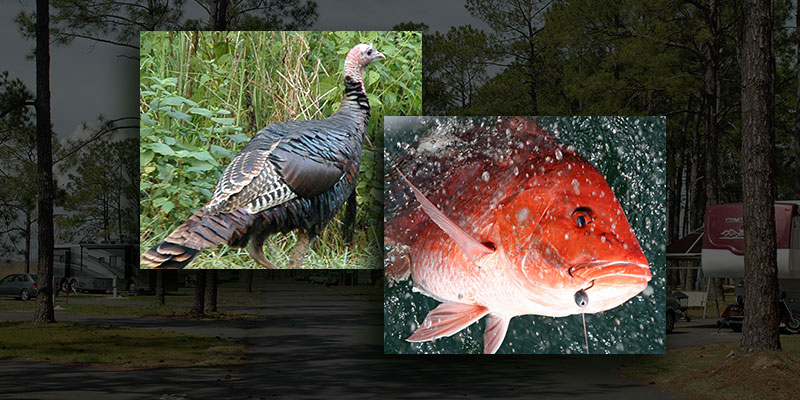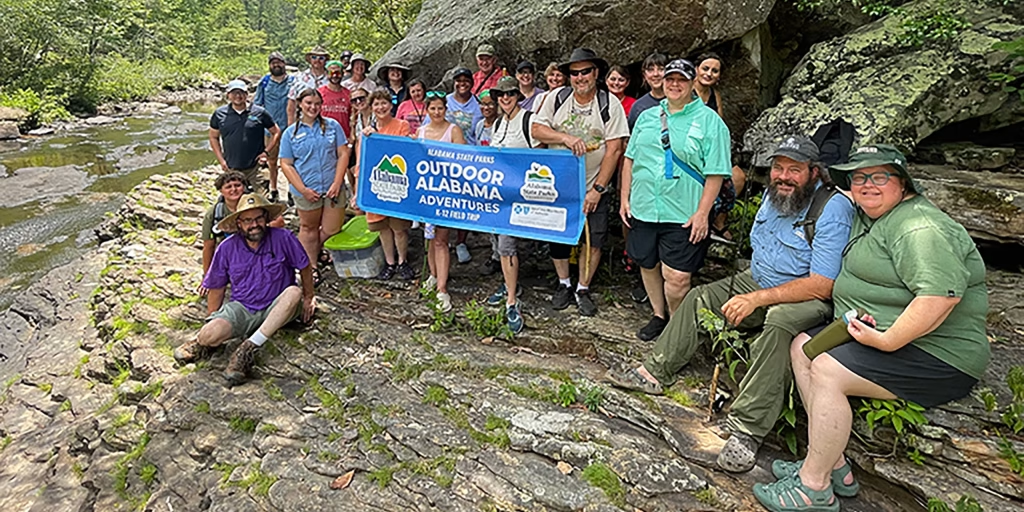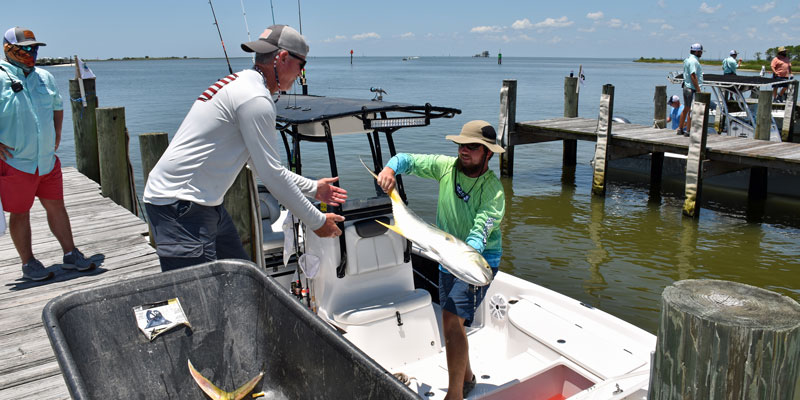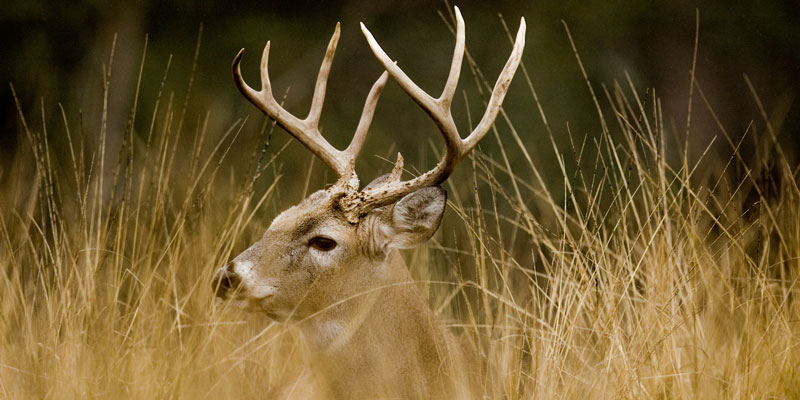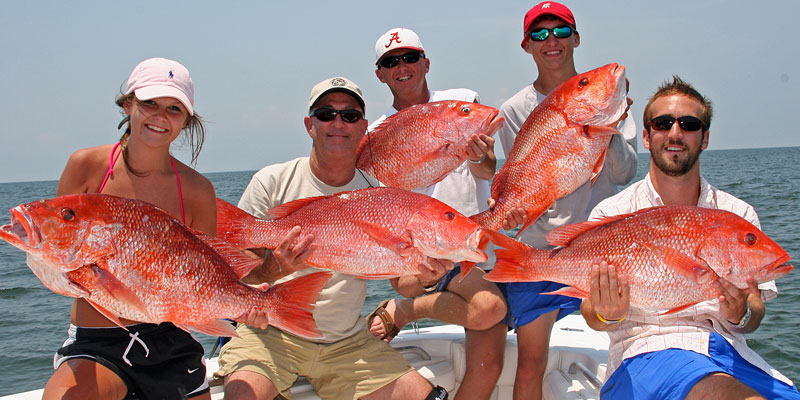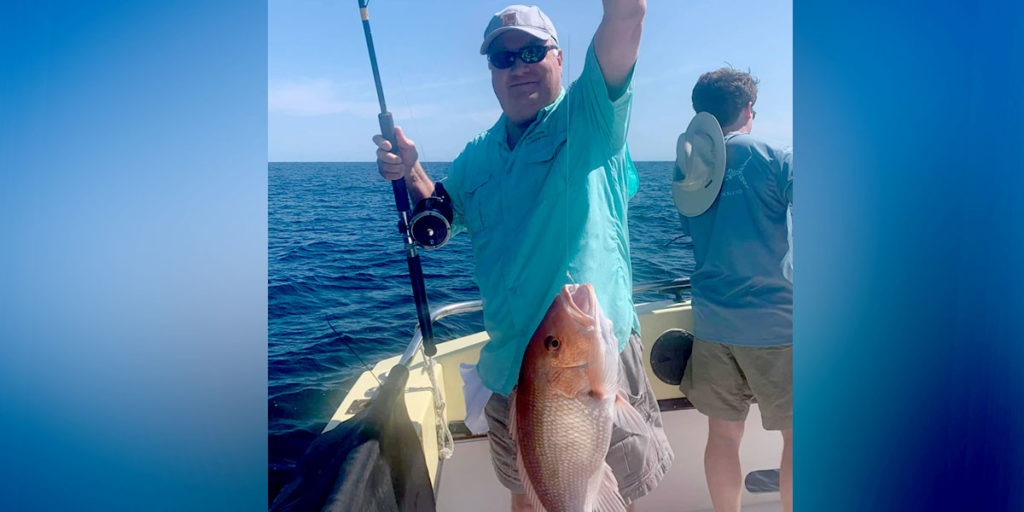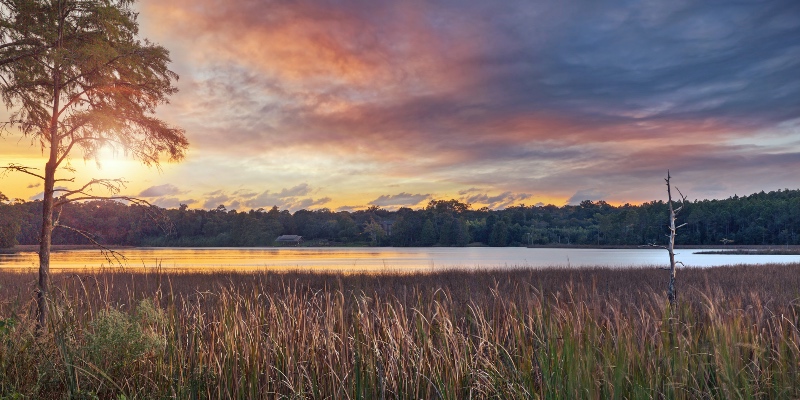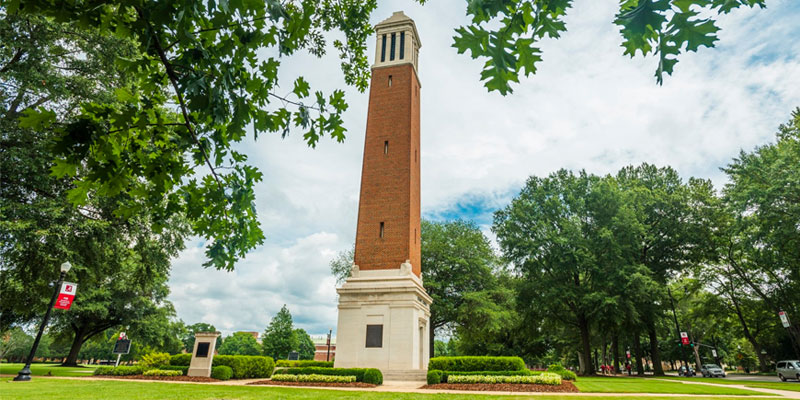The Alabama Conservation Advisory Board approved a three-day extension of the red snapper season and tabled a motion to change the season dates and bag limit for wild turkeys at its recent meeting in Mobile.
Chris Blankenship, Commissioner of the Alabama Department of Conservation and Natural Resources (ADCNR), recommended a three-day extension of the red snapper season, which the Board approved unanimously. The extra red snapper days are set for October 10-12. The Board also voted to give the Commissioner leeway to adjust those dates should inclement weather interfere with the planned extension.
“We saw an increased participation in red snapper season,” Commissioner Blankenship said. “People couldn’t play travel ball. They weren’t going to Disney World or going on family vacations. Consequently, we saw increased participation on all weekends of the red snapper season. Because of that, we closed the season on July 3 as we were approaching the quota on red snapper. After checking the data and seeing the final landings, we have about 128,000 pounds of red snapper quota left.”
The Commissioner said the approved extension is the Saturday, Sunday and Monday of Columbus Day weekend.
The Board heard a presentation from Mike Chamberlain, the Terrell Professor of Wildlife Ecology and Management at the University of Georgia, about the decline of wild turkey populations in the South. Chamberlain’s presentation was the same one given to Arkansas Game and Fish Commission, which wanted to see data on how harvest impacts the population dynamics.
“Arkansas’ turkey population has been declining for a number of years,” Chamberlain said. “The trajectory of the population in Arkansas is almost identical to the trajectory of the population in Alabama, except that Alabama is about seven or eight years behind.”
Chamberlain, who is studying wild turkeys in numerous states from Arizona to North Carolina, said gobbling activity begins about 45 days before the peak of nesting.
“Gobblers become receptive well before the hens do,” he said. “We know two things drive gobbling activity. One is hen availability. As hens become less available, gobbling increases. The other is competition amongst themselves. If your buddy is gobbling, you gobble.
“What we see is that a lot of gobbling in March corresponds to no breeding activity. We also see that gobbling really picks up when hens start to nest.”
Chamberlain said what we’re dealing with in the South is an increased harvest of gobblers and a survival rate of hatchlings that is not high enough to sustain the population.
“What we see is a slow, gradual decline across all the states in the Southeast,” he said. “The survival rate of a clutch is 1 to 1½ poults per hen. That is not sustainable. So, it makes sense that the populations have slowly declined.”
Chamberlain also said his studies indicate that about 80 percent of the harvest occurs before the peak of incubation.
“If you remove four toms from 2,400 acres, gobbling decreases four-fold,” he said.
Chamberlain pointed out that the reported harvest on the opening weekend of Alabama’s 2020 season was 43 percent higher than the harvest from 2019, a trend that held true throughout the Southeast.
“We know that early in the season, the dominant birds are the ones being shot,” he said. “So that 43 percent disproportionately affects the older, dominant birds.”
Chamberlain said the result of taking the dominant birds out of the population is an increase in the length of nesting activity. Instead of most of the egg-laying occurring within a few weeks, he said the hatching of the eggs is now stretched out over as much as 100 days.
“If all of these hens drop their clutches within a couple of weeks, they will hatch about the same time,” he said. “By scattering them across the landscape across 100 days, you give predators the advantage. With all the eggs hatching at one time, predators can’t possibly find all of them. If you stretch it across three months – rat snakes, raccoons, horned owls – you’re giving them an advantage.
“The science suggests the activity we’re doing is contributing to this prolonged nesting effort.”
Board Chairman Joey Dobbs asked Chamberlain if he had suggestions on how to stop the decline of the turkey population in Alabama and the Southeast.
“There are some things we can control and some things we can’t,” Chamberlain said. “This bird, uniformly across the Southeast, is dealing with habitat issues – declining quality, fragmentation, urbanization. We have diseases that are popping up that are affecting the birds. We have predator communities that are much more diverse than they were. We can’t control any of that because most turkeys live on private land.
“What we can control is what we know impacts this bird. That is harvest. We’ve known this since the mid-’90s.”
After Chamberlain’s presentation, a motion was made to change the dates and bag limit for Alabama’s turkey season with a starting date of April 1 through the first Saturday in May with a season bag limit of three birds. The current regulations open the spring turkey season in most of the state on the third Saturday in March with a season bag limit of five birds.
Before the vote, Board Member Patrick Cagle offered an amendment to table that motion until the February 2021 Board meeting to ensure hunters in Alabama would not run afoul of a new regulation with the current regulation already printed in the Alabama Hunting & Fishing Digest. The Board unanimously approved the amendment to table the motion.
When asked for a recommendation on turkey season by Chairman Dobbs, Wildlife and Freshwater Fisheries Director Chuck Sykes said the decline in Arkansas’ turkey numbers is an ominous indication of where Alabama is headed without change.
“I would ask the Board to move the season starting date to as late as possible with a three-bird bag limit,” Sykes said. “I think Dr. Chamberlain showed that Arkansas is in a bad way right now. We’re headed in that direction. The sooner we can take proactive solutions, the better. I don’t want to kick this can down the road any farther. Thank y’all for saying you will take this up at the first meeting of 2021 and make a decision. It’s time.”
During the meeting, Commissioner Blankenship provided an update on the effects of COVID-19 on the ADCNR’s operations.
“I think our people are doing their best at social distancing and maintaining the safety guidelines,” Commissioner Blankenship said. “Our State Parks stayed open the entire time, dealing with the public every day, as well as our officers and staff in the field. I really appreciate their work during this time. It’s been a testament to our employees and their passion for what we do. Governor (Kay) Ivey and State Health Officer Dr. Scott Harris felt like outdoors recreation was essential. I think it has been essential for people being able to get out and enjoy the outdoors when so many other things were closed. We’ve seen increased occupancy at our State Parks campgrounds and day-use facilities, our waterways and fishing lakes, our Forever Wild trails, and our WMAs (wildlife management areas). They were highly used.
“I think it shows the beautiful resources we have in our state, the wildlife and the diversity of the areas. I think people realized how fortunate we are and what a great state this is to live in. I think people got out and went to places they’ve never gone before. I think that has been good for not only physical health but mental health as well.”
Commissioner Blankenship also reported an increase in license sales, which is the main source of income for the ADCNR.
“Our hunting, fishing and Wildlife Heritage licenses were up a good bit,” he said. “Our non-resident licenses were down, as you can imagine with the travel restrictions.”
Commissioner Blankenship said a marketing campaign was initiated to target those individuals who may not hunt or fish but appreciate the diversity of wildlife and natural wonders Alabama offers.
“We are trying to increase participation in license sales for people who utilize areas of the state that don’t require a license,” he said. “They don’t hunt or fish, but they birdwatch or hike or take advantage of the recreational opportunities on the property managed by the ADCNR. We marketed our Wildlife Heritage License to the birdwatching community. We increased that license’s sales by more than 33 percent last year.
“Our new licenses are on sale now. One of the things we added this year was packages. If you want to hunt deer, you can select a hunt package. If you want to fish freshwater, you can select that package. If you want to fish saltwater, you can select that package. We wanted to make it easier for the public to go online and purchase licenses.”
Visit www.outdooralabama.com/
David Rainer is an award-winning writer who has covered Alabama’s great outdoors for 25 years. The former outdoors editor at the Mobile Press-Register, he writes for Outdoor Alabama, the website of the Alabama Department of Conservation and Natural Resources.




